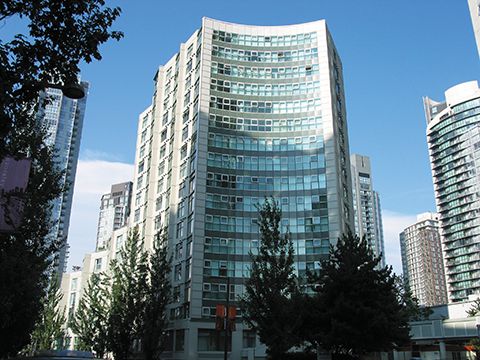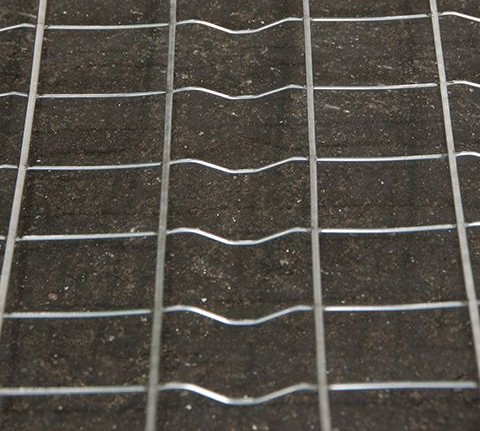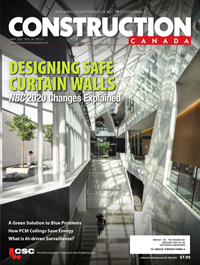Role of metal with stucco claddings in high-rise buildings

There are expanded metal laths also available, but these are not as common in Canada as they are in the United States. In Canada, most stucco is installed with the use of welded wire laths. Expanded metal lath is more often specified for usage with tiles and manufactured stone. Proper installation of the lath requires it be pulled taut and lay flat. Fastening must be with code-specified, corrosion-free fasteners—this usually means roofing nails, but they may also be construction staples or screws. The fastener should be located at framing members and penetrate 25 mm (1 in.) into the framing. The fasteners’ spacing is required to be spaced 150 mm (6 in.) vertically when framing is 400 mm (15.7 in.) on centre (oc) horizontally, or 100 mm (3.9 in.) vertically when framing is 600 mm (23.6 in.) horizontally.
The lath normally undergoes a hot-galvanized process to prevent corrosion. It is also protected with embedment within the stucco that is highly alkaline—a pH in the 10 range. Metals will not corrode in a high-pH environment. There is a small exception to this rule where carbon dioxide (CO2) from the atmosphere will cause carbonation. This will slowly reduce the alkalinity in the stucco surface, but only to a depth of 3 mm (1/8 in.). This is the reason for instructions on lathing products, especially stucco corner beads indicating a minimum embedment of 3 mm is required.
There are numerous suppliers of each type of lath, including the welded wire laths and the expanded metal types. The former is normally available in rolls that are 1200 or 1350 mm (48 or 54 in.) in width; while length varies, they are 60 m2 (450 sf) per roll.
Some lath features longitudinal wires that are partially flattened. This provides an important safety feature for lathers where the lath will remain flat when unrolled, and have the risk of unexpectedly rolling back, causing potential injury. Further, the wires are strengthened by the flattening process, and the manufacturer claims a resulting decrease in cracking with their use.
Application of the plaster
The first coat is called the scratch coat and should be nominally 9 mm (3/8 in.) The second coat, called the brown coat, should also be nominal 9 mm for a total of approximately 19 mm (3/4 in.).
There are two accepted methods for applying the scratch and brown. The traditional method is to do the scratch on one day and then the brown either the next day or later. The second method is to scratch and double on the same day, and wait until the first coat sets up adequately to provide support for the second coat. The theory of this second method is less moisture is lost, resulting in less overall shrinkage.
Depending on weather conditions, moist curing is required. (This would generally be hot and windy conditions.) Moist curing enables the cement materials to hydrate properly and the stucco membrane to reach its desired physical properties and to reduce shrinkage, which in turn can lead to cracking.
The finish coat can be conventional cementitious coat or an acrylic finish. There are many manufacturers of these coatings and application recommendations should be followed. Normally a period of seven days is required before application of the finish.

The application of simulated or manufactured stone veneer has grown dramatically over recent years. Since the manufactured stone is not an approved cladding, the approved cladding is intended to be a 19-mm (3/4-in.) thick stucco layer behind the stone. However, this is not a case where the stucco can be the primary barrier since it does not have a finish to resist water passage. Therefore, as water enters through the stone work joints, it becomes trapped and starts to saturate the stucco and wall.
This is a best-case scenario—in many instances, there is not the 19-mm stucco thickness behind the stone. When expanded metal is used, there is a high density of openings that provide good ‘hang-on’ of the stone when mortar is wet. Therefore, there is a tendency to just butter the back side of the stone pieces and then attach directly to the lath. At best, there may be 9 mm of mortar, but it is not densified or totally continuous and does not stop water entry to come in contact with the building.
This scenario is a problem not only in wet climates, but also in areas with snow buildup. With heat passing from the structure, the snow melts and the resulting water passes down and in between the stonework. The issue of moisture in the building is only a problem when the water is trapped and is unable to pass through the manufactured stone, becoming trapped and causing building component failures.
Stone manufacturers provide installation recommendations and these must be followed. To attain the solid plaster base stipulated by these companies, there are welded wires that provide an enhanced plaster base because such a product is specifically engineered to provide a full scratch coat, making it difficult for applicators to ‘lick and stick’ the stone pieces on.
Using a traditional expanded metal lath proper embedment can be an issue and without embedment of the lath to the plaster stones can fall off when a first coat of plaster has not been allowed to properly set.
Conclusion
A common complaint with stucco is the potential of cracking. By its nature, the material is brittle and some degree of cracking may occur. This would be the result of building movement or settlement. Other cracks may form as a result of excessive shrinkage during curing. However, there are acrylic stucco coatings with various degrees of elasticity that can cover and bridge cracks.
The combination of steel and portland cement stucco has proven itself serviceable in various climates and been used successfully in all regions of Canada. Properly done, stucco in combination with the metal reinforcing is a successful coating for low- and high-rise multi-family buildings.
 William Spilchen, P.Eng., has more than 40 years of experience in the construction and stucco industry. He is currently president of Spilchen & Associates Consulting Engineers and is involved in investigation of building envelope failures. Spilchen is member of numerous trade associations dealing with improvements of standards, including the ASTM C11 Stucco Work Group. He can be contacted by e-mail at spilch@telus.net.
William Spilchen, P.Eng., has more than 40 years of experience in the construction and stucco industry. He is currently president of Spilchen & Associates Consulting Engineers and is involved in investigation of building envelope failures. Spilchen is member of numerous trade associations dealing with improvements of standards, including the ASTM C11 Stucco Work Group. He can be contacted by e-mail at spilch@telus.net.







